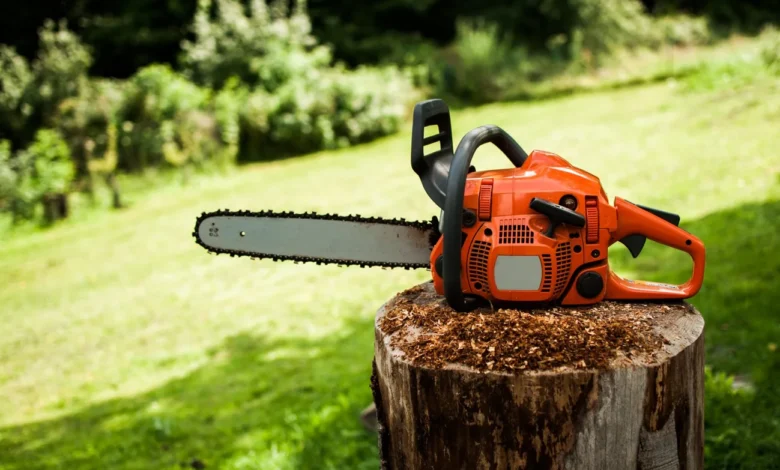
Chainsaws, those powerful tools that easily slice through timber, have a fascinating history deeply rooted in the need for efficiency and progress. In this article, we’ll explore why chainsaws were invented, from their humble beginnings to their diverse applications in the modern world.
Introduction
Brief history of chainsaws
Chain saws weren’t always the handheld powerhouses we know today. Their inception can be traced back to when manual labor was the primary timber-cutting method.
Importance of understanding the invention
To truly appreciate the significance of chain saws, it’s crucial to understand the challenges that led to their creation and their subsequent impact on various industries.
Early Logging Challenges
Manual labor struggles
In the early days of logging, the reliance on manual labor for cutting timber posed significant challenges. The process was time-consuming, labor-intensive, and often dangerous.
Need for efficient cutting tools.
The demand for efficient cutting tools became apparent as the logging industry expanded. The search for a solution led to developing early prototypes that would eventually evolve into our current chain saws.
The Birth of Chain saws
Early prototypes
The first chainsaw prototypes were experimental and crude, but they laid the foundation for future advancements. These early attempts aimed to mechanize the cutting process and reduce the physical strain on workers.
First practical chainsaw design
The breakthrough came with the creation of the first practical chainsaw design. This marked a turning point in the logging industry, offering a more efficient and less strenuous timber-cutting method.
Chain saws in War
Military applications during World War II
Chain saws found unexpected use during World War II, where they played a crucial role in military operations. The wartime experience accelerated the development of chainsaw technology.
Impact on chainsaw development
The lessons learned from wartime applications influenced the post-war commercialization of chain saws, leading to further refinements and improvements in design.
Post-War Commercialization
Chain saws enter the consumer market.
After World War II, chain saws transitioned from military use to the consumer market. This marked the beginning of a new era, where chain saws became more accessible to a broader audience.
Advancements in technology
Technological advancements, such as the introduction of electric chain saws, contributed to the growing popularity of these tools. Chain saws evolved to become more versatile and user-friendly.
Evolution of Chainsaw Design
Transition to electric chain saws
Electric chainsaws provided a cleaner and quieter alternative to their gas-powered counterparts. This transition marked a shift towards more environmentally friendly options.
Introduction of gas-powered models
With their increased power and mobility, gas-powered chain saws became the preferred choice for many professionals. The variety in chainsaw options allowed users to choose based on their specific needs.
Chain saws in Forestry
Efficiency in timber harvesting
Chainsaws revolutionized the forestry industry by significantly improving the efficiency of timber harvesting. The speed and precision offered by chainsaws transformed the logging process.
Environmental concerns
Despite their benefits, the widespread use of chainsaws raised concerns about deforestation and environmental impact. This led to efforts to implement sustainable logging practices.
Safety Measures
Risks associated with chainsaw use
While chainsaws brought efficiency, they also introduced new risks. Understanding and mitigating these risks became crucial to ensuring the safety of users.
Importance of proper training and gear
Proper training and safety gear emerged as essential elements in the effective and secure use of chainsaws. The importance of education and precautions cannot be overstated.
Modern Chainsaw Applications
Beyond logging: other uses
Chainsaws have expanded beyond the realm of logging and forestry. Their versatility has led to applications in construction, emergency response, and even artistic endeavors.
Innovation in chainsaw technology
Ongoing innovation in chainsaw technology continues to push the boundaries of what these tools can achieve. Intelligent features and ergonomic designs are now standard in modern chainsaws.
Chainsaws in Popular Culture
Depiction in movies and literature
Chainsaws have become iconic symbols in popular culture, often associated with horror movies and intense action scenes. Their portrayal in media has contributed to a unique public perception.
Impact on public perception
The way chainsaws are depicted in movies and literature has shaped public perception. Despite their practical applications, chainsaws are sometimes viewed with a sense of awe or fear.
Environmental Impact
Deforestation concerns
The widespread use of chainsaws has raised valid concerns about deforestation. Striking a balance between economic needs and environmental preservation remains a challenge.
Sustainable logging practices
Efforts are underway to promote sustainable logging practices, ensuring that chainsaw use does not contribute to irreversible environmental damage. Balancing industry needs with ecological responsibility is paramount.